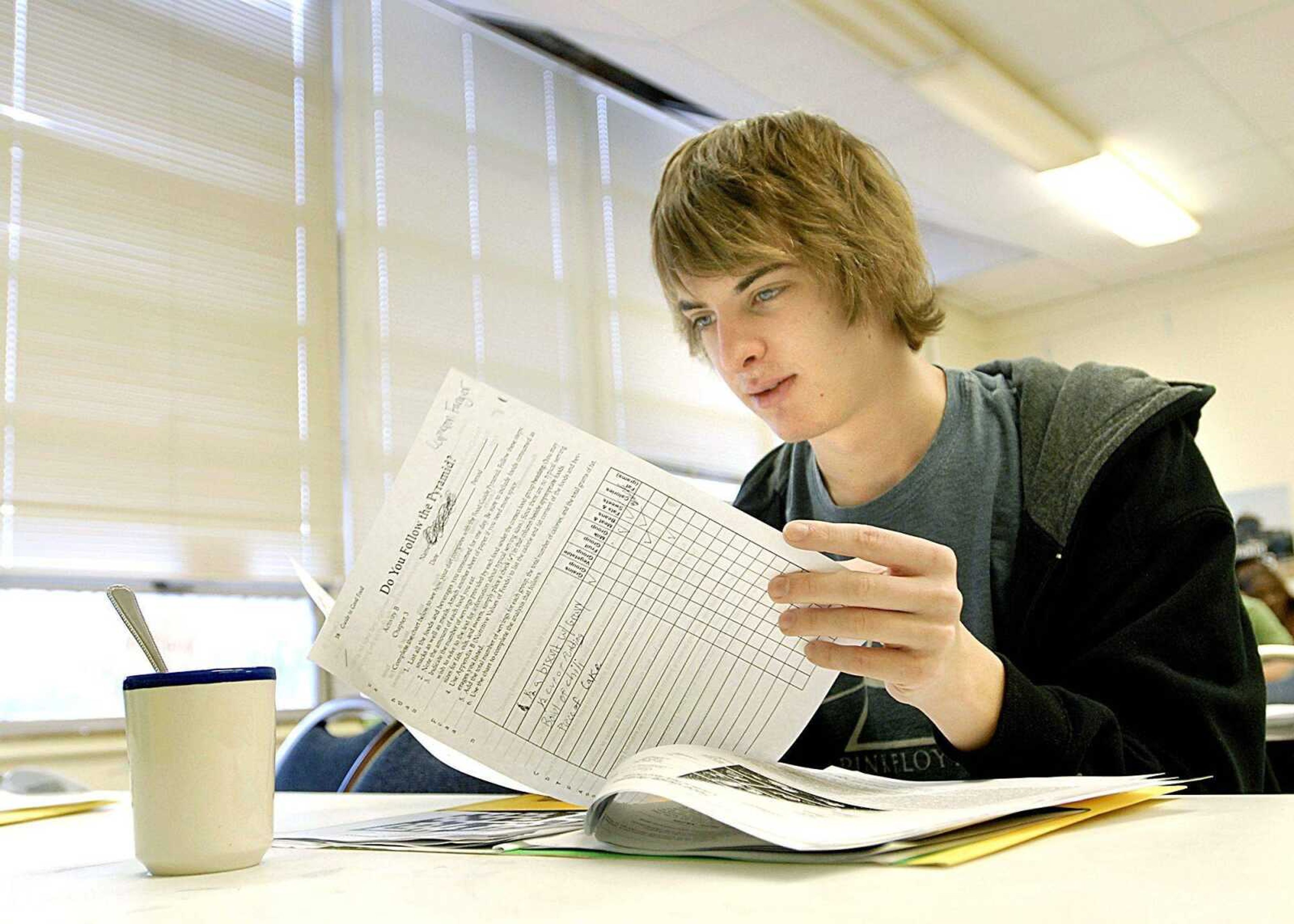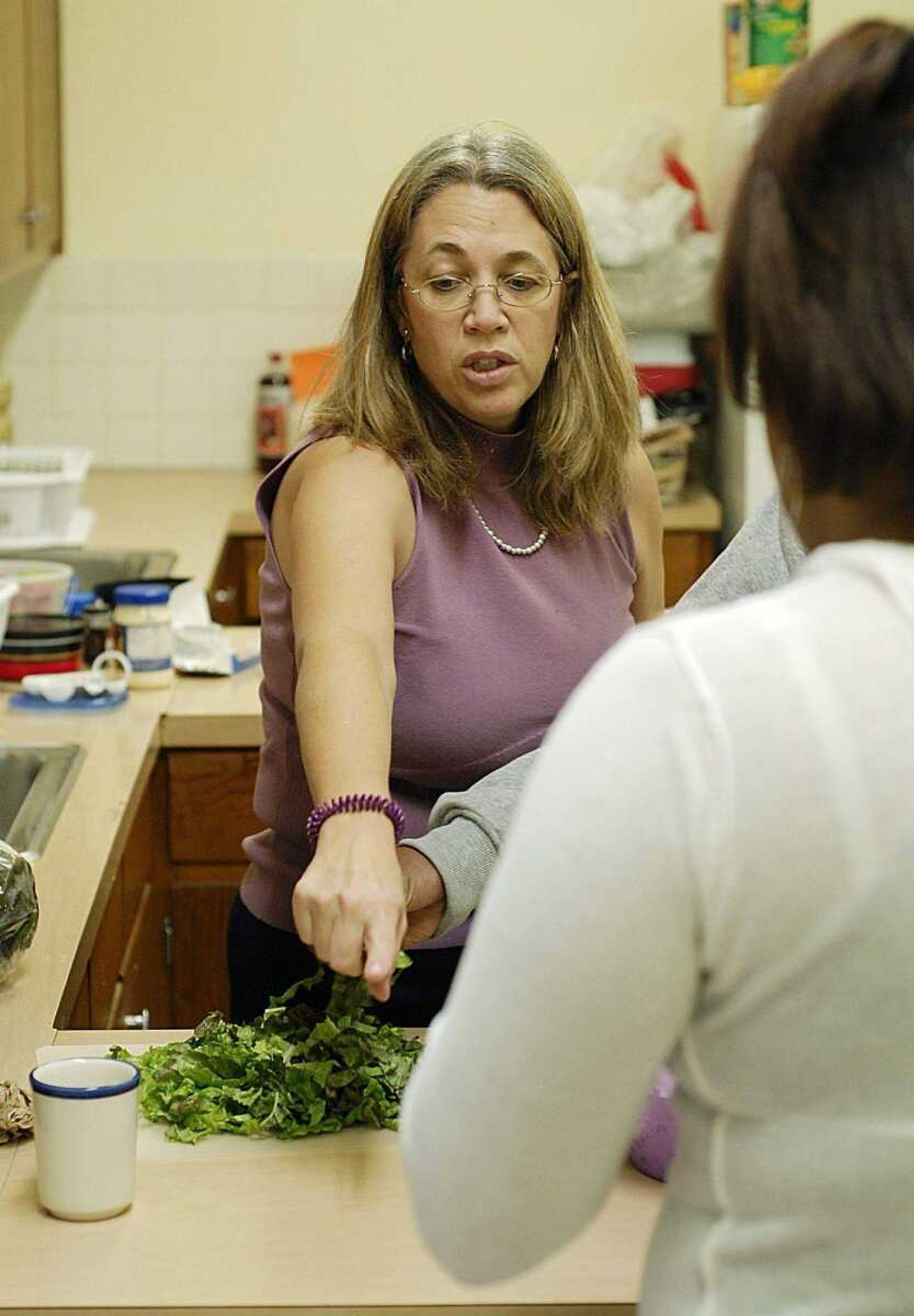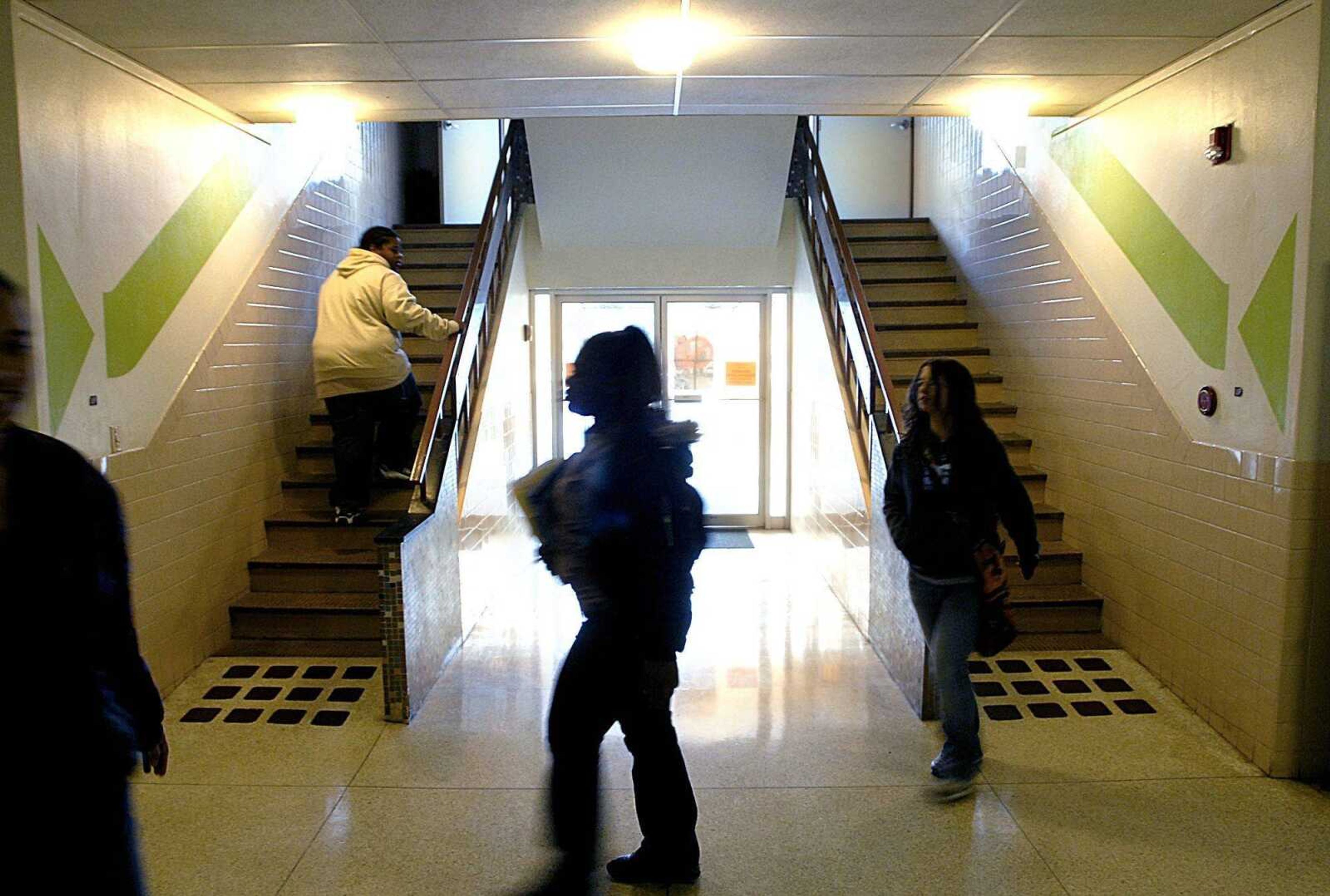The school for second chances
Walking through the halls of the Alternative Education Center, even during a passing period, there is relative calm. Students are orderly, the noise minimal. During class, the halls are nearly silent. "That's what surprises people the most, is how quiet it is," said Carla Fee, director of the center...
Walking through the halls of the Alternative Education Center, even during a passing period, there is relative calm. Students are orderly, the noise minimal. During class, the halls are nearly silent.
"That's what surprises people the most, is how quiet it is," said Carla Fee, director of the center.
The Alternative Education Center, now entering its 13th year, is still a mystery to most of the public and misconceptions abound, Fee said.
Known as the school for second chances, the center serves about 100 students in fifth through 12th grade. The students have failed in a traditional school setting, and for many, this is their last chance at a diploma.
But unlike the notion that the school is a hotbed for fights or that its students are out of control, only about 20 percent of students attend for discipline reasons. The rest come because they are behind in their classes, because they need a smaller or more structured atmosphere or because of medical reasons, such as pregnancy. Students are accepted based on their applications and recommendations from teachers.

"There is not a bad kid in the bunch; they have just made some mistakes," said Joyce Barylski, who teaches 10 classes throughout the year, including art, English and keyboarding.
Untraditional
There are several differences between the Alternative Education Center and a more conventional school.
Classes are purposefully small: between 12 and 15 students. Most classrooms have enough computers for every student. No homework is assigned. And teachers keep close tabs on pupils. Fee has been known to drive to a student's house when the student didn't show up to school.
"We know a lecture and notes don't work anywhere," said Fee, formerly a teacher at the junior high, so teachers focus on interactive or hands-on learning.
In Jill Buerck's science class, students used magazine cut-outs or drawings last week to illustrate the carbon cycle.
Randy Barnhouse's social studies students simulated an archaeological dig, gently prodding through sand to locate artifacts hidden in a model set on a table.
High school students work on a quarter system, taking the same four classes every day, so they have fewer subjects to focus on.
Because the classes are 85 minutes longer than at Central High School, teachers have the flexibility to go more in-depth, but switch activities every 30 minutes to keep students engaged.
Computer time involves students completing virtual tutorials or questions at their own pace.
The environment
Students are well-versed in the center's rules: no fighting, no sagging (as in jeans), no PDAs and no cussing. The biggest requirement is mutual respect.
"It's a whole lot more organized than what people think it is. Sometimes new kids will come in and try to rattle things up. They think they can get away with more things than they can," said Elesha Jones, 17.
Since Fee became director this school year, students said, standards have been tightened: Attendance is enforced, goofing off is not tolerated and classes are harder.
Fee conducts an orientation for new students each quarter, where she outlines the unwavering expectations.
"If anyone tries to start something, it gets stopped. Ms. Fee makes a big point about no bullying," said Sena Campbell, 17. "A lot know not to start fights because if they do, they know they'll get kicked out and know they won't be able to come back."
A heavy police presence around the school is not due to violence, but because officers use empty space on the second floor for a substation and a location to train police dogs, Fee said.
The staff works to create a positive environment. Every day Fee does "shout-outs" over the intercom, recognizing top students of the day. She has organized spirit days and gives away certificates for pizza every Friday to nominated students.
Teachers stop class to address behaviors and frequently discuss appropriate social skills.
Barnhouse, whose class is structured around routine, makes an effort to greet students at the door. "Every day is a new day, and I do not hold grudges," he said.
Teacher relations
Students frequently seek teachers' advice or discuss personal problems with them.
"They knew when my mother was sick and let me know someone cared," Jones said.
Tia Walter, 17, said teachers are approachable because of the small atmosphere.
Teachers monitor what is going on in students' lives so they can understand their behavior, meeting once a week to discuss issues.
"I have learned that it takes an enormous amount of trust. You have to gain that trust because a lot of times they have been hurt or unsuccessful," Barylski said.
Barnhouse said he has to find a balance between being the students' friend and being a drill sergeant.
"I have found that if your students like you, they are less apt to disrespect you," he said.
Other options
After school, a credit recovery program is offered for students who are academically behind.
Walter, who missed more than 20 days of school last year at Central because of an allergic reaction to a medication, participates so she can graduate on time.
Jones dropped out of school for a year following medical problems and an "altercation with a library teacher" at Central, and hopes to gain enough credits to graduate in 2009.
Another program is called Options, for students throughout the district who are suspended.
"They're not out on the streets, they're not just watching TV. Before, if they missed two weeks of class, it was hard to rebound," said Sarah Schermann, the Options program teacher.
A middle school program was added this month, and currently there are three fifth- and sixth-graders working with teacher Cheryl Kratochvil.
The students are significantly behind in their academics but don't qualify for an individualized education plan, Kratochvil said, a former teacher at Central Middle School.
She focuses on the basics, especially reading and math, and hopes to get the students caught up so they can return to the middle school or junior high next year.
She also concentrates on behavior, discussing strategies for how to deal with feeling frustrated or how to accept no for an answer.
"If you get those kids out of the regular classroom, it frees up those teachers over there to focus on everyone in the classroom, not just one or two that interrupt constantly. Some just need to get out of that atmosphere, get caught up and get some confidence. You have to show them that yes, you can behave and yes, school can be good," she said.
Progress
The center has had four homes in 12 years, starting first with two teachers and borrowed space in a Salvation Army building. Currently in the old Schultz school, the Alternative Education Center will relocate this summer to 330 N. Spring Ave., at the district's administrative offices. Teachers hope the move will be final.
During its early years, the center was funded by grants, but it is now supported by the district.
Since its inception, more than 250 students have graduated, according to the school's Web site.
"If it weren't for the AEC, I'd probably be dropping out," said Candace Moore, 15. "I'd probably be at juvenile, fighting everyone. This school is a blessing."
lbavolek@semissourian.com

335-6611, extension 123
Connect with the Southeast Missourian Newsroom:
For corrections to this story or other insights for the editor, click here. To submit a letter to the editor, click here. To learn about the Southeast Missourian’s AI Policy, click here.








